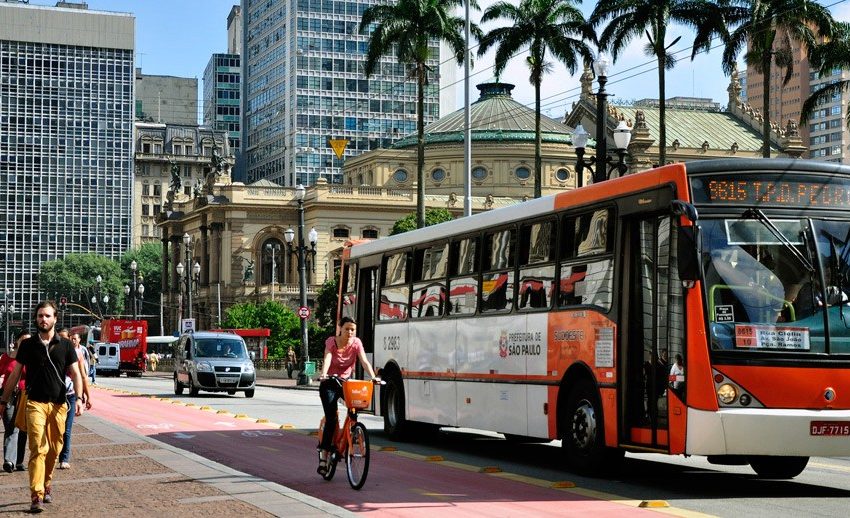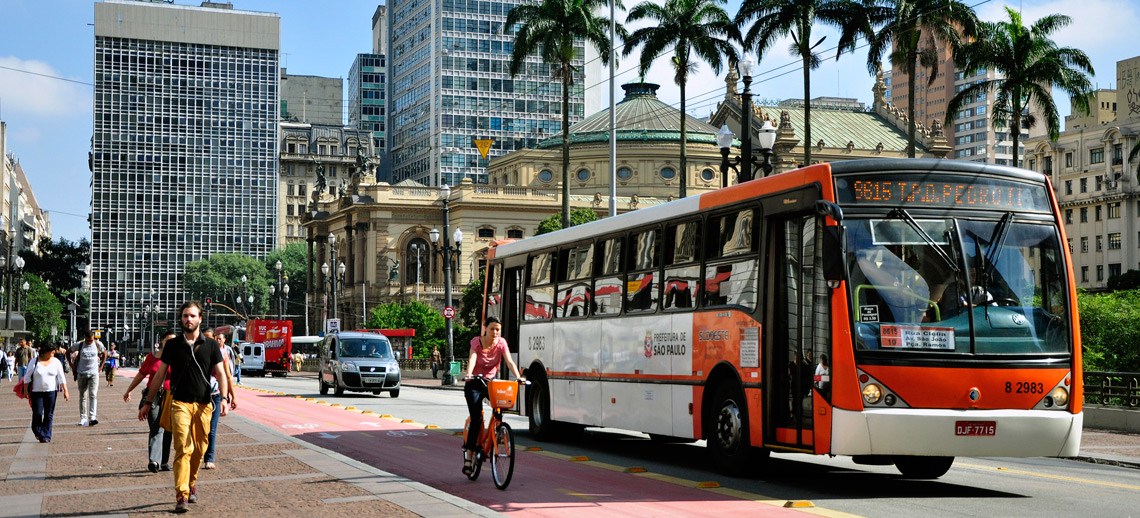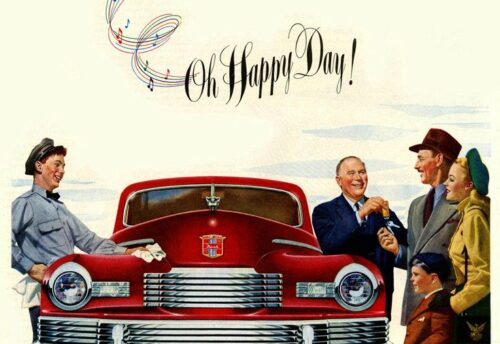
The Long-Term Impact of Pandemic Behaviors on Urban Mobility

It is hard, and not advisable, to make long-term decisions in the midst of the pandemic. But as certain mobility practices that are adopted during this period become part of our daily routines it is absolutely important to assess the potential of enduring after the pandemic. With that in mind, we may have the unique opportunity to hit the reset button and transform urban mobility.
The covid-19 pandemic has changed the frequency and the way urban dwellers move. By measuring the Urban Transportation Wallet of several city center and suburban regions using data captured over the past 18 months, we see reduced travel but also changed consumer preferences for transportation modalities. The reduction in urban travel has been observed in all three of the major travel categories: commuting, shopping, and entertainment. We surmise that commuting to and from work, normally about 20% of our weekly trips in the US, has decreased significantly in part because companies have asked the majority of their employees to work from home, but also because they laid off or furloughed a large number of their workforce. Shopping trips, normally 30% of the weekly consumer trips in the US, have decreased significantly because of shelter in place mandates and social distancing orders. Entertainment-related trips, such as attending performances (movies, theater, etc.), sports events, and frequenting bars and restaurants, normally 15% of trips in the US, has also been cut dramatically as such venues have closed down in order to avoid large congregations of people. The transportation modalities that are preferred by urban dwellers are also changing. During the last year, under the fear of infection, consumers have shown a preference towards their privately-owned vehicles, personal micromobility (owned bicycles, motorcycles, and scooters), as well as walking. The demand for new and used vehicles in the US continues to be in strong, as is for bicycles, and scooters. At the same time demand for passenger mobility services, such as ride-hailing, and public transportation remains low. These changes, combined with moves from large cities to suburbs and smaller cities, will have broader urban mobility implications.
These mobility behaviors can endure for a long time under three conditions. First, if the pandemic lasts for another 12-18 months. Even with countries becoming more effective in addressing rolling infection waves through new medications, therapeutic protocols, and localized lockdowns, experts can foresee the pandemic lasting this long. We also expect that after effective vaccines become available, the public will remain concerned about their health for an additional period of 12-18 months. Second, if the global economic fallout caused by the pandemic lasts for several years. Already the recovery that had been observed in the US and EU during the summer has stalled and is now projected to remain anemic even with the measures that governments have taken on both sides of the Atlantic. The potential development of two separate supply chains, one that is China-centric and another US-centric, will add to the risk of prolonged slower recovery. As a result of slower or no growth, the unemployment will remain high across professions and job categories. Whether unemployed or underemployed, people will likely curtail their spending and travel. Third, people could seek to develop new skills and become employed in positions that may require little or no local travel. The longer consumers remain concerned about their health and employment, the longer they will continue to engage in the practices they established during the pandemic.
These mobility behavior changes will impact differently cities, mobility services companies, and automakers. In particular, as a result of more people walking and using micromobility, cities will need to accelerate the establishment of additional pedestrian zones and the expansion of micromobility corridors. The reduced demand for public transportation and the financial problems it causes will lead more cities to quickly seek public/private partnerships with mobility services companies. As households move out of large cities either to their suburbs or to smaller cities and towns, these destinations will start facing growth-related problems, e.g., congestion, and will need to provide mobility infrastructure and services at a scale and within a time horizon they had not anticipated. As they transform cities will still have to determine whether they become providers of smart transportation infrastructure, transportation coordinators that optimize the utilization and monetization of such infrastructures, or orchestrators that control of every aspect of passenger mobility and goods delivery.
The pandemic has hit hard companies that offer various types of on-demand passenger mobility services. Particularly in North America and the European Union, the passenger transportation operations of on-demand mobility services companies remain about 50 percent lower than a year ago. Furthermore, the autonomous vehicle programs some of these companies have started, though important to their future, remain significant money sinks. It is becoming clearer to them that the broad deployment of robotaxis will require significant additional investments and will take longer than originally anticipated. At the same time the business of companies that offer on-demand goods delivery is booming. The growing consumer adoption of ecommerce, and the importance of same-day and same-hour delivery will provide ongoing opportunities to the companies offering such services. Because of these trends passenger mobility companies are now aggressively pivoting to goods delivery. For example, Uber is emphasizing UberEats, and Lyft announced a partnership with Grubhub while also testing delivery of other types of goods, such as medical supplies. During the next 18-36 months some of these companies may pivot exclusively to goods delivery. It is not yet clear whether the pandemic and the changes it is bringing will have an accelerating or decelerating impact on these companies becoming fleet operators or remain ride coordinators. However, they may be forced by regulation to convert their drivers to employees which will make them fleet operators.
Despite the economic uncertainty created by the pandemic, in order to avoid the risk of infection by using shared mobility, more consumers, particularly in the US, are buying or leasing vehicles helping automakers to start a slow recovery. But automakers are facing a period of heavy investments while the role of privately-owned vehicles in city centers remains uncertain. They are investing in the transformation of the vehicle-acquisition process driven by the consumer preference for online transactions. They are developing in-vehicle and transportation-enabled services in order to establish new business models. Most importantly, they are investing in Zero Emissions Vehicles (ZEVs) in order to respond to new emission regulations. All these investments will continue to pressure the automakers’ ongoing financial performance. Finally, several of the automakers that introduced on-demand passenger mobility services, or were testing such services, are starting to abandon these efforts. The transformations that are necessary because of the new urban mobility combined with the changes brought on by the pandemic will continue to alter the incumbent automotive ecosystem.
In Transportation Transformation I had presented three different implementation scenarios for new mobility in order to account for regional (behavioral, demographic, financial, etc.) characteristics. Each of these scenarios will be implemented over the three phases of new mobility. If the identified changes brought on by the pandemic become daily routines in whatever becomes the new normal, these scenarios will require certain adaptations. Table 1 below summarizes each of the original scenarios, the pandemic’s impact, and the transformation implications:
| Original Scenario | Pandemic’s Impact | Transformation Implications |
|---|---|---|
| Co-existence of mobility services with private vehicles and continuously decreasing role for public transportation |
• Accelerated move away from public transportation and shared mobility • Move to suburbs and smaller cities • Pivot of passenger mobility services companies to goods delivery • Accelerated expansion of goods delivery mobility services • Higher sales of POVs including ZEVx |
Cities: Expedite search for new business models, rethink suburban mobility, public/private partnerships MS Companies: Identify new business models for passenger mobility, curtail vehicle technology investments, accelerate pivot to goods delivery OEMs: Focus on new vehicle technologies and accelerate digitalization of customer-facing processes |
| Multimodal public transportation co-existing with on-demand mobility services that are offered by fleets; decreasing role of privately-owned vehicles. | • Slower than anticipated adoption of shared mobility • Growth of private micromobility and walking • Accelerated expansion of goods delivery mobility services • Slow recovery of auto sales further diminishing the role of POVs in cities |
Cities: Accelerate the creation of safe corridors for walking and micromobility MS companies: Expand the seamless integration of public transportation and mobility services, increase capacity to accommodate distancing and protections from infection risk OEMs: Focus on profitable market segments, abandon mobility services efforts |
| Centrally orchestrated multimodal passenger mobility and goods delivery offered exclusively as a service using advanced transportation networks many of which will rely on autonomous vehicles of various form factors, with only a limited role for private vehicles. | • Re-thinking fleet configurations with an emphasis on avoiding infections • Expedited introduction of autonomous vehicles for passenger mobility and goods delivery |
Cities: Accelerate infrastructure investments and mobility orchestration implementations MS companies: Expand coordination with cities and adoption of new technology vehicles OEMs: Harder and faster decisions on areas to focus (geographies, services technologies) |
Because of the pandemic we are introducing new practices to our lives and expanding the use of previously adopted ones. These practices are having a major impact on urban mobility. The adoption of telework and telecommuting by more companies and more employees from a larger set of industries, will keep low the number of commuting related trips. The adoption of ecommerce by more population segments globally and for a larger set of categories will continue increasing the goods delivery trips. As consumers are becoming used to at home entertainment because of the increasingly richer experiences provided by video streaming services which eventually will incorporate virtual and augmented reality will keep low the trips related to entertainment and social activities. Even after the identification of effective vaccines, inoculating the world’s population and providing ongoing protection and immunity will take considerable time. The three major constituencies involved in new mobility must utilize this period as a unique opportunity to undertake the transformations that will ensure their position in urban mobility.




Leave a Reply